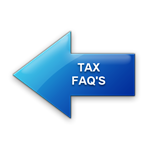Should you reinvest dividends on stocks & mutual funds?
There are several considerations when deciding on reinvesting dividends. It’s important to understand the implications before executing your specific strategy.
A dividend is essential “bonus” money paid out by a company/mutual fund to the owners of that investment.
Dividend reinvestment is a common investment strategy that essentially involves using those dividends to buy more shares of that company. The alternative is to take the dividends as cash so the funds are available for any other purposes the investor might have.
So should you reinvest dividends you earn from your investment?
The Benefits of Reinvesting Dividends
- Reinvestment can be put on auto-pilot
- Auto-reinvestments of dividends are usually commission-free
- Allows purchase of fractional shares
- Compound growth
Compound growth is really the primary benefit of reinvesting dividends. For example, an investor who owns 100 shares of a company that pays a $1 dividend would receive $100 in dividends. Let’s say the company stock is worth $25 per share. That $100 dividend being reinvested allows the investor to own an added 4 shares in the company, increasing ownership to 104 shares. Now if an added $1 dividend is paid, the owner would receive $104 in dividends due to now owning 104 shares. If this $104 is reinvested when the stock is worth $26 per share, the owner would now have 108 shares. So you can see how this compounding process allows the owner to exponentially increase stock shares owned.
The Drawbacks of Reinvesting Dividends
- Cash earned from dividends isn’t available for other purposes
- Taxes are due on dividends even if cash isn’t received
Even with the compound growth potential, it may not make sense for you to reinvest dividends. This could be the case if you have other financial goals like paying off your home sooner. Or maybe you prefer to reinvest the dividends in a different company.
Some also find it difficult to pay taxes on reinvested dividends. Let’s say you have $100,000 in an account that pays $5,000 in dividends. At a possible 30% combined capital gains tax rate (between IRS & State), that could be $1,500 in taxes due. You might now have the cash to pay that tax without the dividend income being paid out to you. In that case, you may only want to reinvest a portion of your dividends, or none at all.
It's important to speak with your financial advisor when coming up with your specific strategy on reinvesting dividends
© 2024 Peshke Financial Inc., all rights reserved. NMLS #2244878. DRE #02210589. "Making Finances Simple. Changing Lives." is a registered trademark with USPTO. Material contained in this website is for informational purposes only and is not meant to be construed as direct financial advice for your specific situation. It is recommended that you consult with your own advisors for any personalized financial guidance. Since we’re not licensed attorneys, we cannot provide legal advice. As such, any info contained in this website should not be construed as direct legal advice. Individual Licensure (see profiles) - click here. Send Docs Securely - click here. Privacy Policy - click here.


